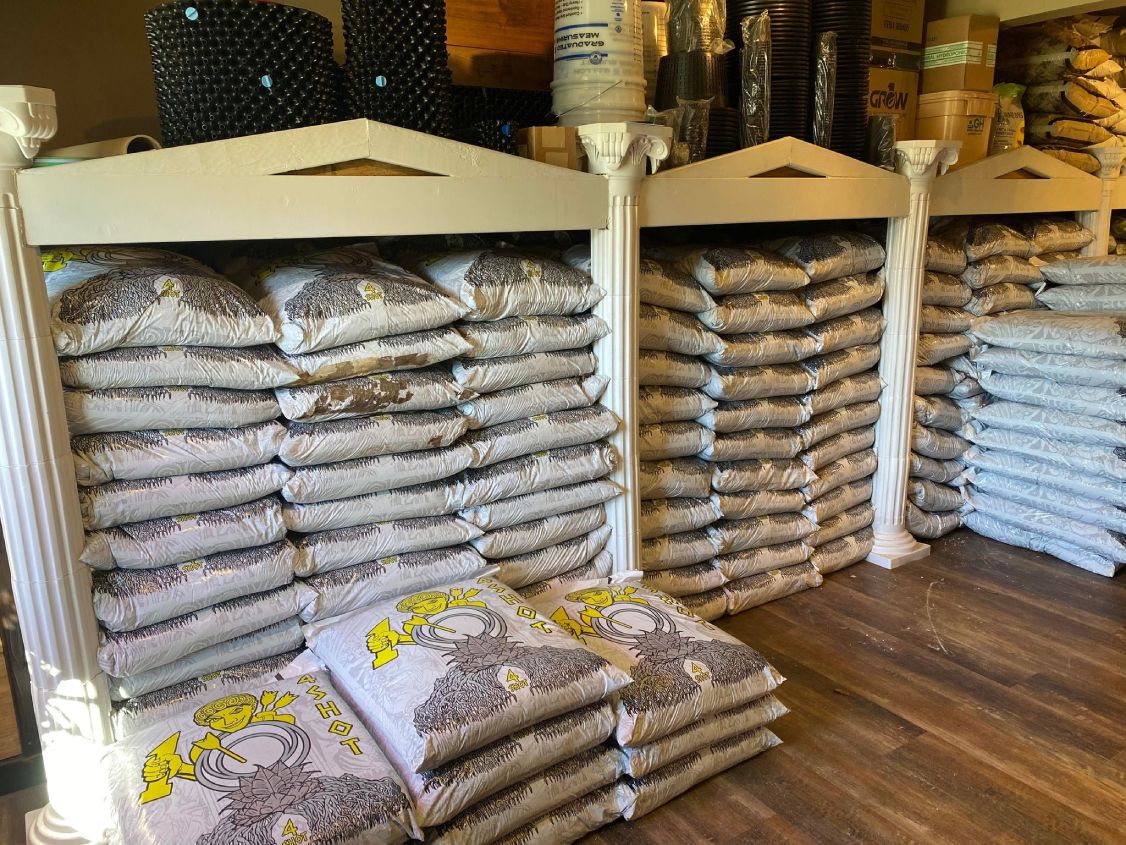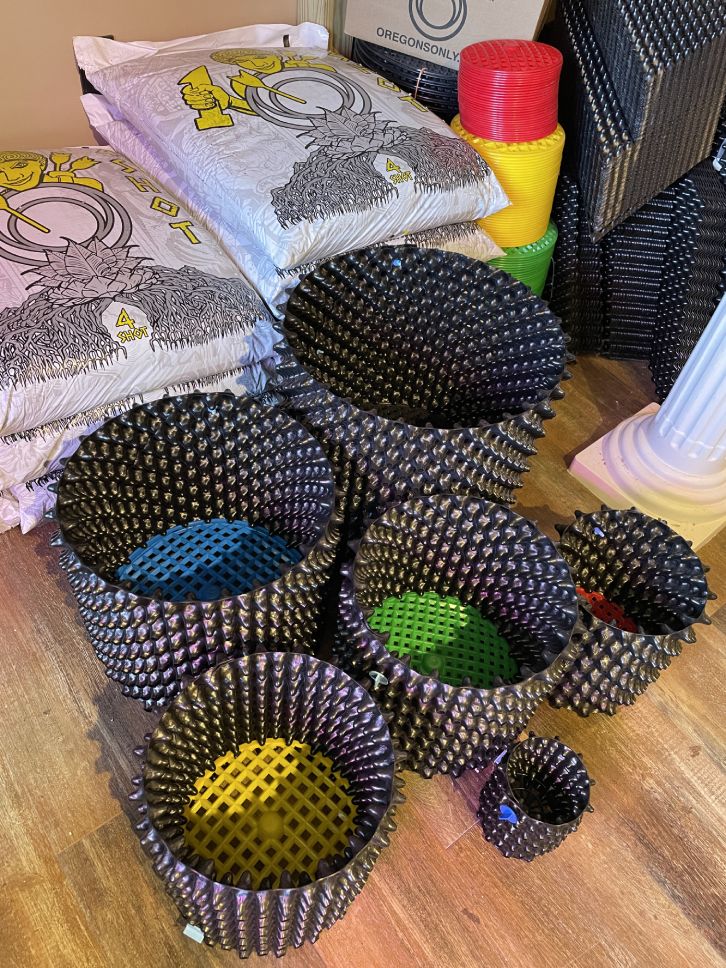Unravel the Tricks of Effective Growing with The Indoor Earthworm
Unravel the Tricks of Effective Growing with The Indoor Earthworm
Blog Article
Using the Power of Hydroponics: a Deep Study Uses and Various Types
In the realm of modern-day agriculture, hydroponics has emerged as a method that tests traditional farming techniques by using a water-efficient and space-saving choice. The usage of hydroponic systems opens up a world of possibilities for cultivating plants in varied atmospheres, eventually affecting food manufacturing and sustainability. As we browse with the detailed landscape of hydroponics, exploring its various types and applications, a deeper understanding of its prospective to change farming practices and address international food protection issues starts to unravel.
Benefits of Hydroponic Farming
Hydroponic farming offers many advantages over typical soil-based farming. One of the key advantages is water efficiency; hydroponic systems utilize up to 90% less water compared to traditional farming approaches.
Furthermore, hydroponic farming enables greater control over nutrient levels, bring about faster plant development and greater yields. By giving necessary nutrients directly to the plant origins, hydroponic systems promote healthier and a lot more durable plant development. In addition, the regulated environment of hydroponic systems minimizes the risk of insects and illness, minimizing the need for harmful pesticides and herbicides.

Typical Kinds Of Hydroponic Equipments
One widespread type is the Deep Water Society (DWC) system, where plant origins are submerged in a nutrient solution. The Ebb and Flow system, also known as Flooding and Drainpipe, periodically floodings the plant origins with nutrient option before draining it. Wick systems, the easiest type of hydroponics, make use of a wick to passively provide vitamins and mineral solution to the plant roots.
Nutrient Film Technique (NFT) System

Among the vital benefits of the NFT system is its water performance. The Indoor Earthworm. Considering that the nutrient service is recirculated in a shut system, this method makes use of considerably much less water compared to conventional soil farming. Additionally, the NFT system is space-efficient, making it perfect for interior farming or in locations with restricted room for conventional farming
Nevertheless, the NFT system requires careful tracking and maintenance to make certain the continual circulation of water and nutrients. Any type of disturbance in the circulation can rapidly affect plant wellness. In general, the NFT system uses a reliable and sustainable way to expand plants hydroponically, specifically for crops that prosper in well-oxygenated root settings.
Deep Water Culture (DWC) System
Relocating from the Nutrient Film Strategy (NFT) system, the Deep Water Society (DWC) system is a hydroponic technique that includes suspending plant origins directly in a nutrient option. Unlike NFT, where origins are continually exposed to a thin movie of nutrient option, DWC plants have their roots immersed in a storage tank loaded with aerated nutrition water. The roots hang in the nutrient service, permitting for direct uptake of water and necessary nutrients.
One of the key benefits of the DWC system is its simplicity and reduced upkeep requirements. The continuous access to oxygen and nutrients promotes quick development and greater yields. However, DWC systems require ample aeration to avoid root rot and make sure ideal nutrient absorption. Routine surveillance of pH levels and nutrient focus is essential to protect against discrepancies that can damage plant health.
Aeroponic System
An ingenious technique in hydroponics farming, the Aeroponic System makes use of a misting or misting system to provide nutrients directly to plant roots suspended airborne. This system is recognized for its capability to promote fast development and efficient nutrient uptake as a result of the direct delivery of nutrients to the roots, permitting the plant to concentrate its energy on growth instead of looking for nutrients. In an aeroponic arrangement, plants are commonly housed in a shut atmosphere where the roots are intermittently misted with a look what i found nutrient remedy. This misting cycle makes sure that the roots obtain ample oxygen, advertising healthy and balanced origin advancement and overall plant development.
One of the key advantages of aeroponics is its water efficiency, as the system utilizes dramatically less water contrasted to standard soil-based growing approaches. In addition, the specific shipment of nutrients straight to the roots can cause greater yields and faster development prices. While aeroponics can be much more intricate to establish up and maintain contrasted to various other hydroponic systems, its possibility for enhanced plant development and efficiency makes it a preferred selection for commercial farmers and hydroponic enthusiasts looking for optimum results.
Verdict
Finally, hydroponic farming uses numerous advantages and various sorts of systems to pick from. The Nutrient Film Technique (NFT) system, Deep Water Society (DWC) system, and Aeroponic system are among the most usual methods made use of in hydroponics. Each system has its own advantages and constraints, making it important for farmers to very carefully consider their demands and preferences before picking the most appropriate system for their plants.
Unlike other hydroponic systems where plants are immersed in a nutrient service, in the NFT system, the origins are revealed to the water just in a shallow film.Moving from the Nutrient Film Strategy (NFT) system, the Deep Water Society (DWC) system is a hydroponic technique that includes putting on hold plant roots straight in a nutrient remedy.An innovative approach in hydroponics cultivation, the Aeroponic System makes use of a misting or misting system to check this supply nutrients directly to plant roots put on hold in the air. The Nutrient Film Strategy (NFT) system, Deep Water Culture (DWC) system, and Aeroponic system are among the most usual approaches utilized in he has a good point hydroponics. Each system has its own benefits and limitations, making it essential for farmers to thoroughly consider their requirements and preferences prior to selecting the most appropriate system for their plants.
Report this page